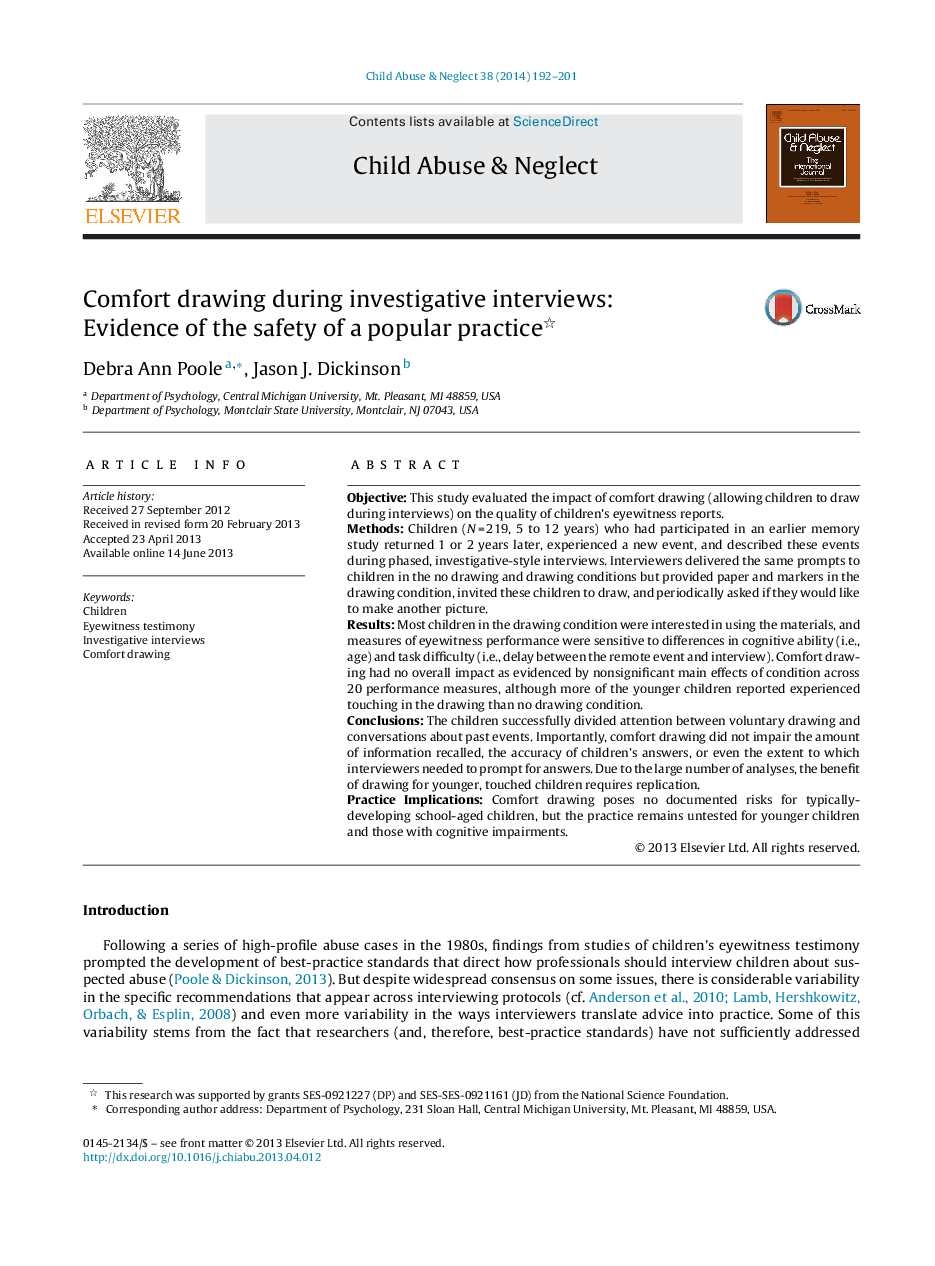| کد مقاله | کد نشریه | سال انتشار | مقاله انگلیسی | نسخه تمام متن |
|---|---|---|---|---|
| 344824 | 617457 | 2014 | 10 صفحه PDF | دانلود رایگان |
ObjectiveThis study evaluated the impact of comfort drawing (allowing children to draw during interviews) on the quality of children's eyewitness reports.MethodsChildren (N = 219, 5 to 12 years) who had participated in an earlier memory study returned 1 or 2 years later, experienced a new event, and described these events during phased, investigative-style interviews. Interviewers delivered the same prompts to children in the no drawing and drawing conditions but provided paper and markers in the drawing condition, invited these children to draw, and periodically asked if they would like to make another picture.ResultsMost children in the drawing condition were interested in using the materials, and measures of eyewitness performance were sensitive to differences in cognitive ability (i.e., age) and task difficulty (i.e., delay between the remote event and interview). Comfort drawing had no overall impact as evidenced by nonsignificant main effects of condition across 20 performance measures, although more of the younger children reported experienced touching in the drawing than no drawing condition.ConclusionsThe children successfully divided attention between voluntary drawing and conversations about past events. Importantly, comfort drawing did not impair the amount of information recalled, the accuracy of children's answers, or even the extent to which interviewers needed to prompt for answers. Due to the large number of analyses, the benefit of drawing for younger, touched children requires replication.Practice ImplicationsComfort drawing poses no documented risks for typically-developing school-aged children, but the practice remains untested for younger children and those with cognitive impairments.
Journal: Child Abuse & Neglect - Volume 38, Issue 2, February 2014, Pages 192–201
